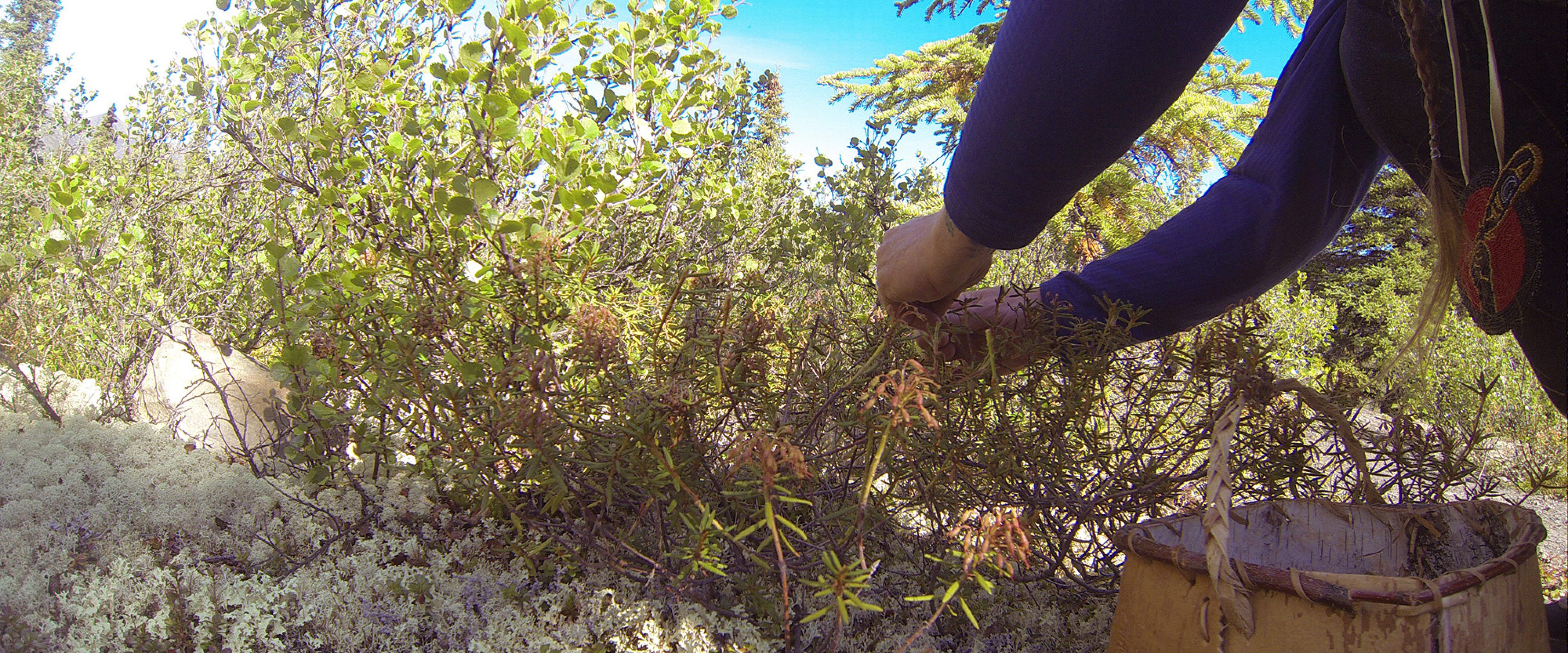When the Land Speaks is organized by the Eli and Edythe Broad Art Museum at Michigan State University and curated by Carla Acevedo-Yates and Steven L. Bridges, Associate Curators. Support for this exhibition is provided by the Alan and Rebecca Ross endowed exhibitions fund.
About the Exhibition
Dylan Miner is a Wiisaakodewinini (Métis) artist, activist, curator, and scholar who works across mediums to explore indigenous identity and anticolonial action. The title of this work employs the Métis words Michif—referring to both the Métis people themselves and their language—and michin—meaning “medicine”—to address the degradation of indigenous identity and knowledge under colonialism, and to pay tribute to the artist’s great-grandmother, a maker of healing salves. Michif—Michin is part of a larger project in which Miner investigates traditional medicinal practices of the Great Lakes—a region that is home to many Métis communities. It documents the artist’s travels and labor as he collects wild medicinal plants such as fireweed, yarrow, sage, and arrowhead. Shots of Miner at various harvesting sites are interspersed with visual meditations on rocky, treed shores and rushing water above and below the surface of the lake. The work underscores the urgency of preserving and revitalizing Indigenous history, knowledge, and language, which has historically faced (and continues to face) attempted erasure under colonial regimes.
Dylan Miner is Director of American Indian and Indigenous Studies and an Associate Professor in the Residential College of Arts and Humanities (RCAH) at Michigan State University. He is also Adjunct Curator of Indigenous Art the MSU Museum. Miner sits on the Michigan Indian Education Council and is a founding member of the Justseeds artist collective.
When the Land Speaks
This program presents the work of artists who explore the land as a space of conflict, which speaks through a changing, often fractured landscape. Addressing current issues such as resource extraction, sustainability, land rights, and displacement and dispossession, the works in this video series approach language as a form that does not limit itself to verbal communication. Instead, enunciation takes place in and through the territory: in the sounds and forms that water takes, in the rumbles and cracks of the earth, and in the ancestral rituals and practices derived from the landscape. In many ways, land and language have always been interconnected, each helping to define the other. But in our present day, there is a growing disconnect between much of human society and any sense of rootedness or care for the land that supports us. Confronting these realities, the artists in this series draw attention to the power of the landscape to express itself and communicate with us, and reflect on how our eroding connection to the land may also represent a fading understanding of ourselves.
